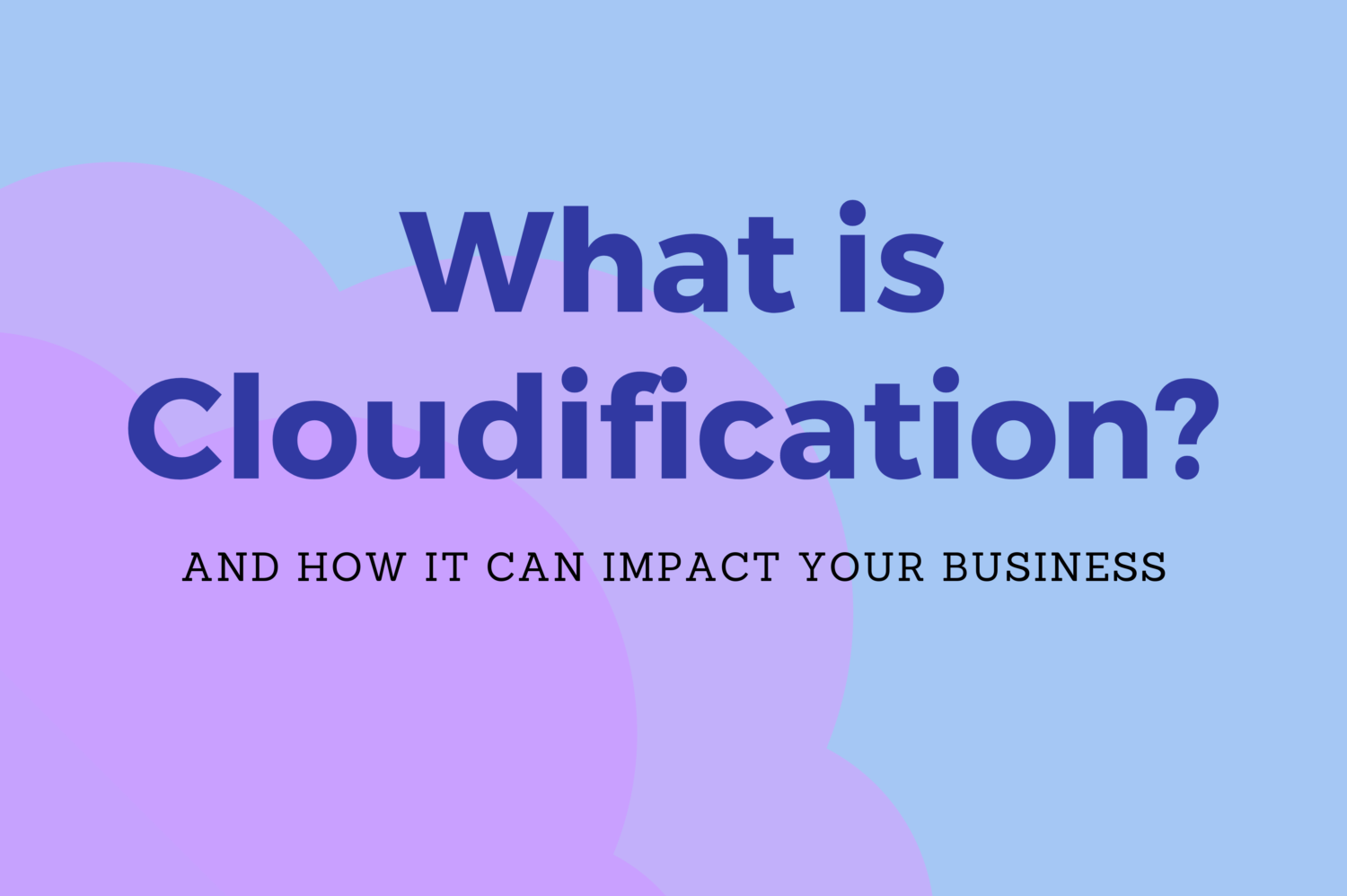Why is Cloudification Important for your Business?
Cloudification is a term that has been used to describe the process of moving IT infrastructure, applications, and operations to cloud-based platforms. Cloud has been one of the most important developments in technology as rapid access to computing resources enabled companies to optimize their operations, improve scalability, and reduce costs. Essentially helping businesses become more competitive in the market.
As technology evolved, organizations moved away from traditional on-premise solutions in favor of cloud computing to meet their long-term business objectives. The process of cloudification has been gaining traction over time and has become an essential component of modern business operations.
But what exactly Cloudification is and what role it plays for the success of your business?
Let’s dive in and find out!
What exactly is Cloudification?
Cloudification is the process of transitioning traditional applications, databases and services (computing, storage and networking resources) from on-premises or hosted applications into private or public clouds such as Amazon Web Services (AWS), Microsoft Azure, Google Cloud Platform (GCP), and others.
This process involves replicating existing network architectures (or designing new ones) into the cloud environment and using cloud-native technologies to manage the workloads. This process involves the use of DevOps tools and techniques to automate tasks such as provisioning resources, deploying software changes, monitoring application and system performance, and more.
The goal of cloudification is to make applications more agile and resilient while reducing costs associated with infrastructure lifecycle operations as these responsibilities are shifted from IT staff within your organization over to the cloud service provider. This grants organizations access to more powerful resources that can be used to scale up with increased demand (traffic peaks) and it facilitates the access and management of their IT resources. All of this can be done in a very cost-efficient way
Why Is Cloudification Important?
First of all, cloudification allows CIOs to take advantage of all the benefits that cloud computing offers, including scalability, cost savings, often improved performance, and enhanced security.
As companies grow, they need to be able to scale up their IT infrastructure quickly and efficiently while staying within a budget. By adopting cloud-based services, CIOs are able to do just that and do that fast.
In addition to scalability, migrating to the cloud can also offer cost savings over traditional on-premise solutions. With the pay-as-you-go model of most cloud providers, companies only pay for what they use without having to worry about upfront capital investment for infrastructure or ongoing maintenance costs. This makes it easier for businesses to focus on their core competencies rather than worrying about managing complex IT architectures or dealing with expensive vendors. Additionally, procuring new hardware for own on-premise infrastructure is often delayed, especially when global supply chains are distorted.
Finally, Cloud-based services provide you with access to your application from any location around the world. Of course, there are security measures to take into consideration in order to protect sensitive information from unauthorized access and ensure that your applications and data remain secure at all times. All major cloud providers are present in more than 10 regions across the globe, making it easy to come to expand to new markets.
How can I Leverage my Cloudification Process?
Cloudifying your business operations shall not be taken lightly. It requires careful planning and execution; however, the benefits are almost certainly worth the effort.
Working with an experienced partner who understands your industry requirements can help you make sure you get everything right when transitioning your workloads into the cloud ecosystem.
- To get started with cloudification you will need to assess your current environment and determine what parts need cloudifying first — typically those that require frequent updates or those that need to be deployed in multiple regions would be good candidates for migration first.
- Once you’ve identified your priorities you then need to select a platform provider — AWS, GCP, Azure are popular choices but there are many other providers available too, offering more attractive pricing in many situations.
- Finally you will have to develop a right cloud-native architecture and a strategy for migrating data securely across platforms.
Don’t hesitate to give us a call if you need help with any of these steps.
Important things to take into consideration
Security Measures & Compliance
- Security has to be a priority
- Large-scale data breaches are becoming more and more common causing businesses to lose sensitive data that often followed by costly lawsuits
- Cloud follows a shared responsibility model – meaning that BOTH cloud provider and you as a customer are responsible, but for different aspects
- The majority of public clouds have advanced security measures in place that often exceed those found in on-premise environments
- Most public clouds offer encryption and authentication systems to protect customer data as well as robust access control models that restrict user activity based on permissions granted by administrators. It is still customer’s responsibility to apply those and manage cloud environments by following best practices and frameworks
- Many public clouds provide certifications such as HIPAA compliance or ISO 27001 and PCI DSS that help ensure customer data remains secure at all times
Cloud Cost Savings
- Cloud hosting can reduce capital expenditure (CAPEX) costs associated with purchasing hardware and software for on-premise solutions.
- You save a lot on operational costs associated with a full hardware life-cycle.
- Very large customers can negotiate better pricing with some cloud providers.
Cloudification makes it possible for companies to quickly scale their infrastructure depending on changes in demand while still being able to maintain high levels of productivity throughout their operations.
Conclusion
Cloudification is an essential part for any company looking to do digital transformation and stay ahead of its competition in today’s rapidly changing business environment. By taking advantage of all the benefits that come along with using a cloud solution such as scalability, cost savings, improved performance and enhanced security; CIOs can ensure that their businesses remain agile and competitive in a constantly evolving market landscape.
With the right strategy in place companies can leverage all these benefits while ensuring that data remains secure during and after the migration processes. Cloudification’s cloud migration services will be your guide on this journey, leading the entire process step-by-step to ensure a smooth, secure, and efficient transition.
Looking to migrate to Cloud? Tired of issues with legacy infrastructure? Need to bring your team up to speed? Give us a call today!

